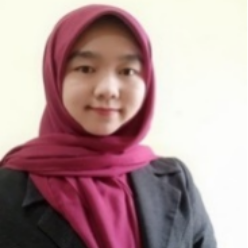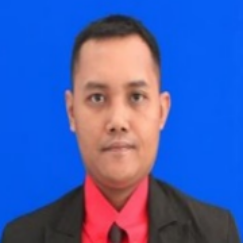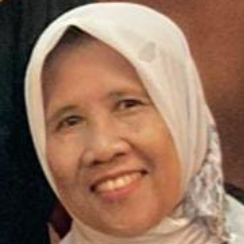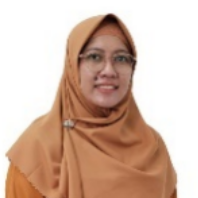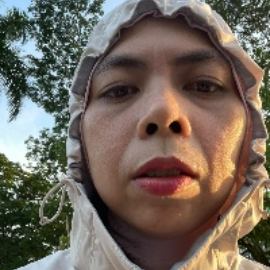International Journal of Information Technology and Computer Science (IJITCS)
IJITCS Vol. 17, No. 5, 8 Oct. 2025
Cover page and Table of Contents: PDF (size: 4806KB)
Application of Multi-Attribute Utility Theory in a Decision Support System for Selecting the Best Budget Hotels in Samarinda
PDF (4806KB), PP.25-38
Views: 0 Downloads: 0
Author(s)
Index Terms
Implementation of the Multi Attribute Utility Theory (MAUT), Decision Support System, Hotel, Samarinda
Abstract
This study addresses the challenge faced by tourists, companies, travel agents, and tourism agencies in selecting the ideal hotel in Samarinda, given the variety of available options. The city boasts numerous hotels with differing facilities, room types, rates, and locations, which can complicate decision-making without adequate information. To provide a solution, this research introduces a Decision Support System (DSS) that employs the Multi-Attribute Utility Theory (MAUT) method for hotel assessment. By evaluating hotels based on key attributes like price, amenities, service quality, and location, the system offers a comprehensive, objective approach to determining the best affordable hotels. The study contributes significantly to the hospitality sector by presenting a practical tool that simplifies the hotel selection process and ensures that choices align with the preferences of the visitors.
Cite This Paper
Anik Hanifatul Azizah, Heny Pratiwi, Reza Andrea, Achmad Afandi, Sri Rakhmawati, Dewi Safitriani, Nurhasanah Nurhasanah, "Application of Multi-Attribute Utility Theory in a Decision Support System for Selecting the Best Budget Hotels in Samarinda", International Journal of Information Technology and Computer Science(IJITCS), Vol.17, No.5, pp.25-38, 2025. DOI:10.5815/ijitcs.2025.05.03
Reference
[1]Abu I, Subagio N, Sutrisno S. The Leading Economic Sector in Samarinda. InEducational Studies: Conference Series 2021 Nov 30 (Vol. 1, No. 1, pp. 97-101).
[2]Mardiany M. Tourism in Samarinda City, East Kalimantan: recent status and future directions. Journal of Indonesian Tourism and Development Studies. 2017;5(1):41.
[3]Lestari SA, Franz A, Putra ER. Information System Data Population in Gunung Panjang Samarinda Seberang. Tepian. 2022 Dec;3(4):173-179.
[4]Ananda AA. Factors Affecting Economic Development and Job Opportunity in Samarinda. Indonesian Journal of Multidisciplinary Science. 2022 Oct 19;2(1).
[5]Wahyuni AA, Muhammad N, Molakandella BK. Planning of Samarinda Smart City Program Communication. Russian Journal of Agricultural and Socio-Economic Sciences. 2021;116(8):159-69.
[6]La Ode Hasiara AM, Hasriadi LM, Yanti W. The Relationship of Corporate Governance to Public Financial Performance in Samarinda, Indonesia. Journal of Hunan University Natural Sciences. 2024;51(10).
[7]Pratama MI, Putri AM, Umar Mustofa MG, Mardika I, Kadri MK. Analysis of The Prosperity Level of Samarinda City in The Infrastructure Dimension. InPROCEEDINGS OF THE 5TH BORNEO INTERNATIONAL CONFERENCE (BICAME 2024): Symposium on Digital Innovation, Sustainable Design and Planning (dsp). 2024 Dec 24 (p. 135). Springer Nature.
[8]Putri LE, Nurhuda A, Ramadhani F. Information System for Industrial Mapping at the Industrial Department in Samarinda City. Tepian.;3(4):180-186.
[9]Sunindyo WD, Septian D, Rachmawati R, Sensuse DI. Should we build a metaverse for the new capital of Indonesia?. Heliyon. 2024 Apr 15;10(7).
[10]Halim HS. Exploring information technology in smart tourism in Indonesia. InHandbook of technology application in tourism in Asia 2022 Jul 10 (pp. 471-489). Singapore: Springer Nature Singapore.
[11]Linda N, Nurhuda A, Ramadhani F. Information System for Public Complaints at the Industrial Department of Samarinda City. Tepian. 2022;3(4):187-190.
[12]Rijal S, Wediawati T, Althalets F, Putra M. The Effect of Price and Promotion as Well as Product Quality on the Purchase Decision of Erigo Products on Shopee E-Commerce in Samarinda City. The Effect of Price and Promotion as Well as Product Quality on the Purchase Decision of Erigo Products on Shopee E-Commerce in Samarinda City (January 23, 2025). 2025 Jan 23.
[13]Nurjanana N, Darma DC, Suparjo S, Kustiawan A, Wasono W. Two-Way Causality between Economic Growth and Environmental Quality: Scale in the New Capital of Indonesia. Sustainability 2025, 17, 1656 [Internet]. 2025
[14]Sulistyo SP, Rahman T, Chandra KP, Anwar Y, Juhardika AC. Green Open Space Development as a Green City Concept Implementation Strategy (Case Study in Samarinda City). InIOP Conference Series: Earth and Environmental Science 2024 (Vol. 1291, No. 1, p. 012007). IOP Publishing.
[15]Satria JP, Sulistioadi YB, Setiawan Y, Anwar Y, Juhardika AC. Smart Environment Implementation Study in Samarinda. InIOP Conference Series: Earth and Environmental Science 2024 Oct 1 (Vol. 1406, No. 1, p. 012025). IOP Publishing.
[16]Pratiwi H. Hotel Reservation System Based Local Area Network at Samarinda. In2017 International Conference on Education and Technology (2017 ICEduTech) 2017 Nov (pp. 17-22). Atlantis Press.
[17]Mardiany M. Tourism in Samarinda City, East Kalimantan: recent status and future directions. Journal of Indonesian Tourism and Development Studies. 2017;5(1):41.
[18]Karim S, Kusuma BJ, Mahfud T. Aplication the development of Balikpapan Bay Indonesia based on sustainable tourism. Geo Journal of Tourism and Geosites. 2019;24(1):29-38.
[19]Archer J, Syratt G. Manual of travel agency practice. Routledge; 2012 May 16.
[20]Bogdanovych A, Berger H, Simoff S, Sierra C. Travel agents vs. online booking: Tackling the shortcomings of nowadays online tourism portals. InInformation and communication technologies in tourism 2006 2006 (pp. 418-428). Springer, Vienna.
[21]Safaeva SR, Ishankhodjaeva DA, Juraeva NA, Matyunina OE. Economic and legal aspects of tourism regulation in the new economy: International practice. Journal of Environmental Management & Tourism. 2019 Apr 1;10(3 (34)):459-63.
[22]Nikolskaya EY, Lepeshkin VA, Blinova EA, Kulgachev IP, Ilkevich SV. Improvement of digital technology in the tourism sector. Journal of Environmental Management & Tourism. 2019 Oct 1;10(6 (38)):1197-201.
[23]Dyer JS. Multiattribute utility theory (MAUT). Multiple criteria decision analysis: State of the art surveys. 2016:285-314.
[24]Mubarok W, Efendi TF, Rokhmah S. Implementation of the Multi Attribute Utility Theory (MAUT) Method for Selecting the Best Affiliate Marketing. Jurnal Bumigora Information Technology (BITe). 2024 Jun 30;6(1):15-30.
[25]Schuff D. Decision Support An Examination of the DSS Discipline. springer; 2011.
[26]Wardani N, Kridalaksana AH, Jundillah ML. Forecasting the Hotel Room Reservation Rate in East Kalimantan Using Double Exponential Smoothing. In2019 Fourth International Conference on Informatics and Computing (ICIC) 2019 Oct 16 (pp. 1-7). IEEE.
[27]Meng X, Li X, Han Z, Zhao M. Hotel Selection Method Through Online Reviews: A Multi-Attribute Decision-Making Based on 2-Tuple Aspirations And Group Preference Difference. Available at SSRN 4295239.
[28]Rasool E, Kausar N, Ahmad SS, Aydin N, Olanrewaju OA. Multi-Attribute Decision-making Based on Pythagorean Fuzzy Numbers and its Application in Hotel Evaluations. Decision Making: Applications in Management and Engineering. 2024 Aug 25;7(2):559-71.
[29]Arasteh MA, Shamshirband S, Yee PL. Using multi-attribute decision-making approaches in the selection of a hospital management system. Technology and health care. 2018 Mar;26(2):279-95.
[30]Lee IJ, Huang SY, Tsou MY, Chan KH, Chang KY. Decision analysis for a data collection system of patient-controlled analgesia with a multi-attribute utility model. Journal of the Chinese Medical Association. 2010 Oct 1;73(10):533-9.
[31]Danas K, Roudsari A, Ketikidis PH. The applicability of a multi‐attribute classification framework in the healthcare industry. Journal of Manufacturing Technology Management. 2006 Aug 1;17(6):772-85.
[32]Karim A. Analisis Perbandingan Metode SAW dan MAUT Dalam Pemilihan Dokter Terbaik di RSU Setio Husodo Kisaran. Jurnal Teknologi Ilmu Komputer. 2024 Jun 30;2(2):128-36.
[33]Hatta HR, Novita N. Comparison of two methods between TOPSIS and MAUT in determining BIDIKMISI scholarship. In2018 Third International Conference on Informatics and Computing (ICIC) 2018 Oct 17 (pp. 1-6). IEEE.
[34]Maharani D, Sena MD. The MFEP and MAUT methods in selecting the best employees. InInternational Conference on Social, Sciences and Information Technology 2020 Jul 16 (Vol. 1, No. 1, pp. 19-26).
[35]Zhang L. Multi-attribute Decision Making. InEncyclopedia of Quality of Life and Well-Being Research 2024 Feb 11 (pp. 4484-4487). Cham: Springer International Publishing.
[36]Taherdoost H, Mohebi A. Decision-Making in Software Engineering. InEAI 3rd International Conference on Smart Technologies and Innovation Management: MTYMEX 2024 2025 (p. 13). Springer Nature.
